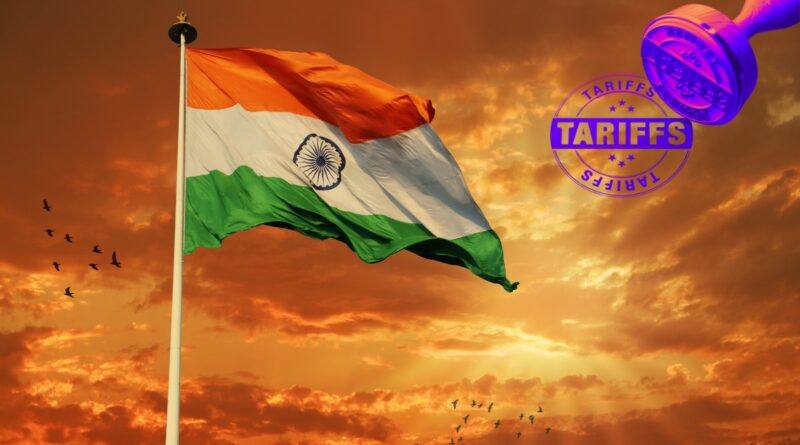Remarkable: India Shows A Calm Way To The World
World Politics | By Kavya Patel | The WFY Magazine – September 2025 Edition
India’s Calm Wins the Day in Trump’s Tariff Test
A storm that never broke
For much of this year, the India–United States relationship seemed locked on a collision course. Washington’s sharp words over tariffs, Russian oil, and market access fuelled headlines about a looming rift. Threats of punitive duties reached levels as high as 50 percent on Indian products, and whispers of secondary sanctions floated across Atlantic capitals. Commentators wondered aloud if trade talks would collapse altogether.
Yet by early September, the tone shifted. The same White House that had scolded New Delhi was suddenly talking of partnership and possibility. The American President, famous for his unpredictable rhetoric, expressed optimism about concluding trade negotiations and hinted at a personal conversation with Prime Minister Narendra Modi.
What explains this sudden mellowing? The answer lies less in Washington’s mood swings and more in India’s steady refusal to be drawn into a shouting match.
India’s quiet firmness
New Delhi’s behaviour throughout the turbulence was striking. It refused to yield on vital interests but resisted the temptation of public escalation. Three points illustrate this approach.
- Energy was safeguarded. India continued to buy discounted Russian crude because it lowered costs, kept inflation in check, and shielded the rupee. At one stage, Russian oil accounted for more than a third of India’s crude basket, and refiners were not about to abandon that lifeline while global prices spiked.
- Agriculture was defended. Calls to open dairy and other farm sectors met the same consistent answer: rural livelihoods cannot be sacrificed to short-term bargaining. India has long maintained this stance, across governments, because millions of households depend on it.
- Autonomy was signalled. India did not retreat from global forums where Russia and China sit, nor did it walk away from cooperation with the United States. Instead, it showed up everywhere — from the Quad to the Shanghai Cooperation Organisation — making it clear that it decides its alignments on its own terms.
This blend of restraint and resolve mattered. It allowed space for tempers to cool in Washington and reminded observers worldwide that India is now too large an economy and too central a player to be pushed into submission.
Why Washington softened
There are structural reasons why the United States cannot afford to let trade quarrels with India spiral out of control.
- Trade scale. India–US goods and services trade touched 212.3 billion US dollars in 2024, an increase of over 8 percent from the previous year. Such depth creates interdependence that rhetoric cannot erase.
- Investment links. American companies have invested more than 60 billion US dollars in India, especially in technology, services, and manufacturing. Thousands of jobs depend on this pipeline.
- Diaspora strength. With over 5 million people of Indian origin living in the United States, the community is a visible bridge across societies. Their contributions to health care, research, and technology are vital, and their political presence is growing.
- Strategic necessity. In the Indo-Pacific, the United States views India as a counterbalance to China. Alienating New Delhi would weaken its own regional strategy.
- European caution. The European Union, while debating tougher sanctions on Russia, is simultaneously negotiating a trade pact with India. Brussels has no appetite to derail that process by joining an American tariff crusade.
Put simply, Washington’s bark was always going to be worse than its bite.
Tariffs as political theatre
Tariffs are a favoured tool of the current administration. Steel and aluminium once bore the brunt; now agricultural products, electronics, and textiles are in the spotlight. Rates of up to 50 percent on Indian goods were floated in official briefings. Yet these figures functioned more as political messaging than practical economic planning.
India, for its part, kept the conversation technical. Negotiators pressed for clarity on specific product lines, avoided grandstanding, and worked through disputes case by case. The point was not to pretend differences did not exist but to handle them without turning every disagreement into a diplomatic rupture.
Oil at the centre of the storm
Energy has become the hardest knot. India’s import bill relies heavily on crude oil and refined products, accounting for nearly a quarter of total imports. Russian discounts since 2022 have been too significant to ignore, saving billions of dollars in foreign exchange and shielding households from painful inflation.
For Western powers, however, every dollar earned by Moscow is seen as prolonging the war in Ukraine. This clash of priorities remains unresolved. The United States and its allies push for stricter enforcement of price caps and sanctions; India insists that energy security comes first. For now, refiners continue to buy, and shipments from Russia are expected to remain high through the year.
What India gained by staying calm
By refusing to engage in a tit-for-tat exchange, India achieved three outcomes:
- Dialogue survived. Despite harsh words, trade negotiators stayed in touch and businesses did not abandon plans.
- Markets steadied. A reduction in rhetorical heat lowered the perceived risk of a full-blown trade war, giving exporters and importers breathing space.
- Reputation strengthened. India was seen globally as a country that defended its interests with composure rather than provocation, an image that adds weight in international forums.
What still lies ahead
The friendlier tone does not erase the underlying friction.
- Tariffs remain. The announced duties are still on the books, and a roadmap for rollback is missing.
- Agricultural disputes persist. The United States continues to press for wider access, while India maintains red lines.
- Digital trade is unsettled. Rules on data flows, e-commerce taxation, and standards still need negotiation.
- Energy tensions endure. If Western enforcement on Russian oil tightens further, India will need new supply strategies to keep costs under control.
The thaw, therefore, is tactical rather than structural.
The diaspora dimension
For the global Indian community, particularly in North America, these shifts are more than distant policy quarrels. Students rely on predictable visa pathways, professionals depend on steady demand in technology and health care, and families in India count on remittances. In 2023, India received 125 billion US dollars in remittances, the highest in the world, with a significant share originating in the United States. Every hint of friction ripples through this network, making stability a direct diaspora interest.
Lessons for the future
The past months offer a simple but powerful lesson. Political noise is unavoidable, but measured diplomacy often outlasts it. India’s choice not to retaliate verbally or yield recklessly demonstrated that calm and maturity are strategic tools in themselves.
For Washington, the episode is a reminder that India is no longer a peripheral partner. It is a market, a manufacturing hub, an energy consumer, and a geopolitical actor whose choices matter across continents.
The coming months will decide whether the softened tone leads to tangible progress — lower tariffs, clearer digital rules, steadier energy flows. Until then, India will continue to practise patience, balancing firmness with flexibility.
A cautious optimism
The frost between India and the United States has not melted, but it has thinned. The relationship is back in motion, even if the path remains uneven. For now, India’s calm has ensured that a potential rupture became an opportunity to demonstrate maturity — and that, in itself, is a quiet diplomatic victory.
© The WFY Magazine | Kavya Patel |
Disclaimer: This article is an editorial analysis prepared for The WFY Magazine. It draws upon publicly available data and widely reported facts but reframes them through independent interpretation. No direct quotations from political figures are used. All figures and references are intended for general information and must not be taken as formal policy guidance or legal advice.




